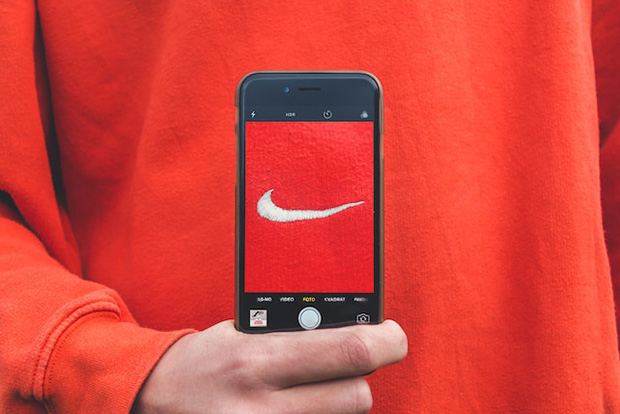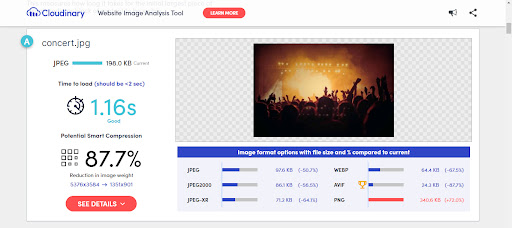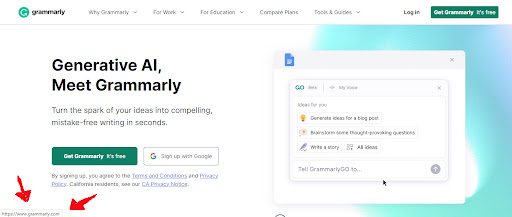How to Optimize and Use Your Logo for Your Brand’s Search Visibility

Did you know your logo can help increase search visibility for your brand?
That’s right: your logo is more than just a pretty brand differentiator. You can optimize it and use it in different ways to get the best results in search engine results pages. In the end, you bolster your digital marketing strategy and generate more leads and boost conversion rates.
Want to get your business in front of new and current customers? Here’s how you can leverage your logo for search visibility:
1. Conduct an Image Audit
Auditing your logo helps you understand how well it’s optimized for organic rankings. Without an audit, you’ll find it challenging to identify the improvements needed for better visibility in search engines.
You can use SEO tools to conduct your image audit. For example, Cloudinary has a free Website Image Analysis Tool. The tool lets you know how the visual elements on your web pages–including your logo—fare in terms of factors like file size, description, and so on. In addition, it shows you how long it takes for the web page to load, the largest image, how much compression is needed, and more:

Just paste your website’s URL into Cloudinary and take note of the flaws it points out:
- Is the file size too large?
- Is its file name not descriptive enough?
- Did you include Alt text?
- Should you use a different file format? We’ll talk more about Alt text and file formats later.
Then make the necessary adjustments to ensure your logo and other visual elements on the page are search-engine friendly.
When used in combination with a tool for content optimization, your logo, and the web pages where it’s found, will be set up for organic search engine visibility.
2. Pick Scalable Design
If you haven’t picked a design for your logo just yet, make sure you pick a scalable design.
A scalable logo design looks great no matter how much it’s shrunk down or blown up. You want your logo to look good whether it’s the size of a favicon or fits in a website header. After all, that’s key to brand recognition. People don’t remember a logo that’s not easy on the eye. If they do remember it, they remember it in a bad way. The logo’s low quality negatively impacts the brand’s reputation.
But that’s not the only reason why you need your logo to be scalable. If the logo is too large relative to the page, it’ll slow the web page down. As we’ll discuss in another section, slow site speeds are a no-no for SEO. Page speed is a ranking factor.
In other words, that page where your logo is found is more likely to rank in search engine results pages if it loads quickly.
Nike’s logo is an example of an awesome combination of simplicity and scalability:

Not only is it incredibly memorable (practically everyone can recognize the swoosh). It’s also scalable. It looks good at any size and isn’t so complicated as to demand a heavier file size.
To ensure that your logo is scalable, test it on as many platforms as possible, not just on your website. But when you do this, make sure you have enough people who can give you feedback on the logo as well. So, if you’re testing your logo on social media, for instance, you can buy Instagram followers or add friends on Facebook.
Also, consider using vector graphics for your logos. They’re ideal for logos because they don’t lose sharpness or resolution when scaled up or down. You can use vector-based programs such as Illustrator to create them.
3. Create Your Own Logo File Names
Here’s another effective way to optimize your logo for search visibility: name its file correctly.
It’s no secret that search engines like Google index image files. They achieve this feat by using the image's file name to understand its subject matter.
Thus, if you don’t follow search engine optimization best practices when naming your images and image files, they’re unlikely to get indexed. Not getting indexed means no search engine visibility, which, in turn, could mean low or no search rankings.
So what’s the correct way to name your logo image file?
To start, avoid using a generic file name. Naming the logo file “image.png” isn't descriptive enough for Google to understand and index. It makes more sense to include your company's name in the logo file name, as that provides more information, especially for branded searches.
As an additional measure, you can include relevant keywords where possible. For example, if your company is a bakery, you could add the word “bakery” after your company's name and before the word "logo" when naming the logo file. Doing so may help the search engine show your website’s content to your target audience when they search.
4. Select the Ideal File Format
One of the hundreds of factors Google uses to decide a web page’s organic search ranking position is the page’s loading time. Google recommends a loading page of under two seconds. If the page has a longer load time, Google is more likely to position it lower in search engine results pages given a search query.
As we’ve seen, one of the biggest culprits behind a slow-loading web page is its images.
Thus, if you want higher search engine rankings (and the visibility that comes with it), you’ll need to choose an ideal file format for your logo.
Google lists six image file formats it indexes, so you can narrow down your choices to them:
- JPEG
- GIF
- BMP
- PNG
- WebP
- SVG
Be that as it may, your work doesn’t end there. You still have to maintain a delicate balance between image quality and page loading speed. The reason is you don’t want to give potential customers a poor user experience by using low-quality images. Achieving that balance comes down to taking cognizance of each file format’s individual qualities.
For example, while JPEGs have smaller file sizes, they compromise on quality. In contrast, PNGs provide a sharper image, but they result in a larger image size. And SVGs don’t lose quality no matter how often they’re resized, making them ideal for logos.
So which file type is best for your logo?
We’d go with an SVG. Unlike PNGs and JPEGs, they offer lossless compression, meaning you can shrink their file size and still retain a sharp image.
5. Put Title and Alt Text Attributes
This strategy is another good way you can leverage your logo for search visibility. The title attribute is information you can include in a photo’s HTML code. See the title tag at the end of this photo’s HTML tag.

You can use the title tag to describe your logo and include target keywords. Google recommends the use of the title tag. It provides Google additional information so that it deems a web page as being relevant content given a search query.
Don’t just incorporate a title tag. Include an Alt text attribute (the second attribute in our example above) as well. This attribute describes the visual elements on a page–including your logo—for users who don’t see them. When an image isn’t rendered properly, the text appears in its place.
The Alt text can, essentially, help improve your site’s user experience. So, it can indirectly help boost SEO by influencing ranking factors like session duration and page views.
6. Link Your Logo to Your Home Page
Go to almost any website and hover your mouse over its logo in the header bar. The chances are that your mouse’s arrow icon will change into a pointing finger that indicates that the logo is clickable. If you click on the logo, the link will take you to the website’s home page.
How can you tell?
A little box showing the home page’s URL will pop up at the bottom left corner of your screen, as is the case with Grammarly’s website below (see where the red arrow are pointing):

You can link your logo to your home page to boost traffic to that page. According to Nielsen Norman Group, this is a standard practice in website design because it’s a user’s expectation. When users click on the brand logo, they know they should be directed to the home page.
With this strategy, your home page will receive a high number of visitors, signaling to search engines that it’s an important page. This high user activity on your website’s home page can in turn boost its search rankings, ensuring online visibility for your brand.
In Closing
Optimizing and using your logo for search visibility isn’t difficult when you know how.
Conduct an image audit to learn whether it's optimized for search. You can also evaluate your logo's design to make it simple and scalable.
Also, ensure that you give the logo file a descriptive name to help search engines index it properly. Add a title and alt text attribute to your logo. As a final tip, link it to your website's home page.
Follow all these logo tips, and you can get more eyeballs on your brand. You’ll be well on your way to success. Good luck!
Copyright © . All Rights Reserved